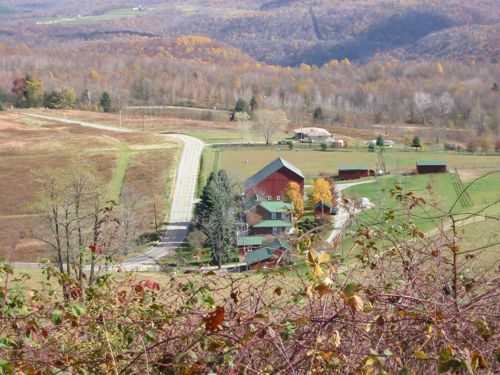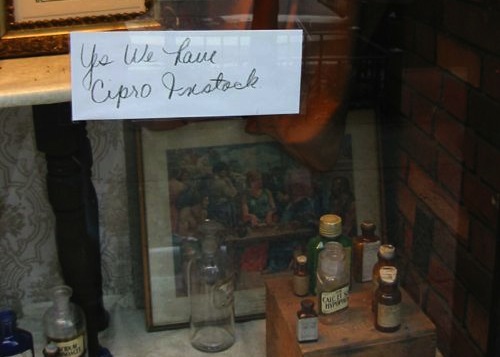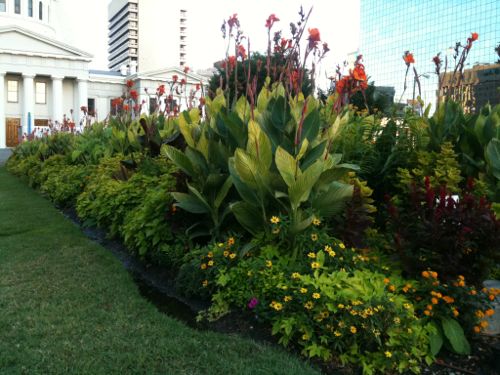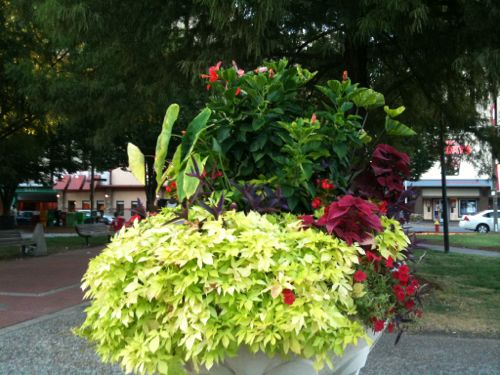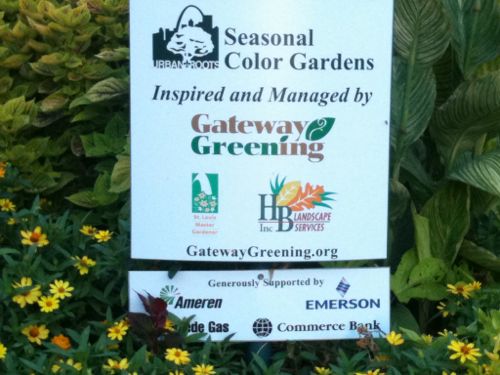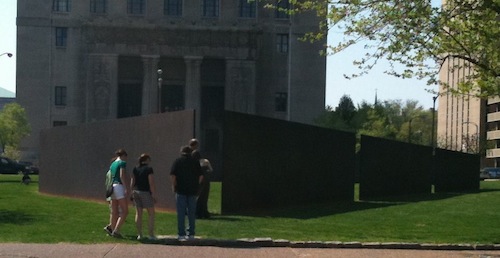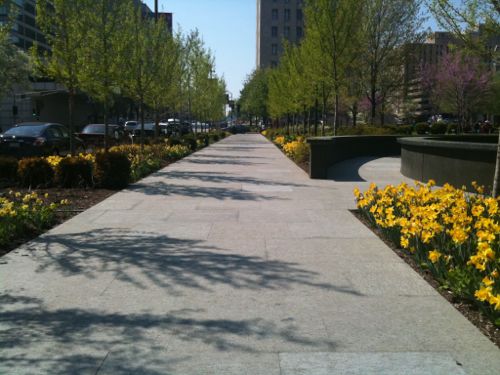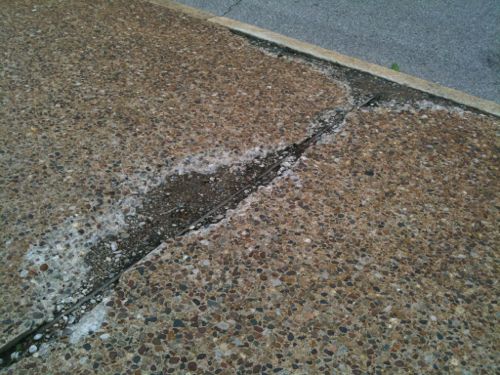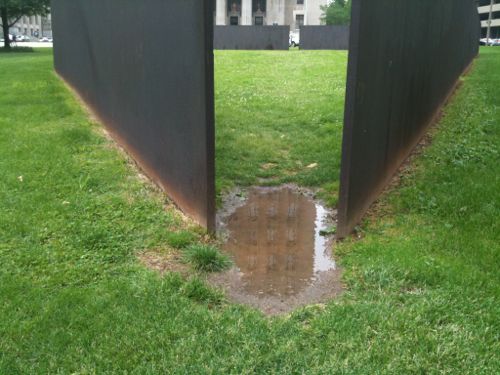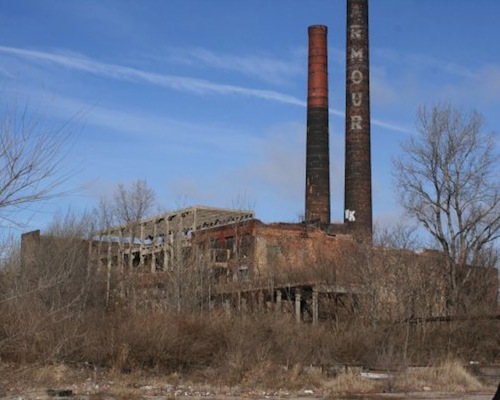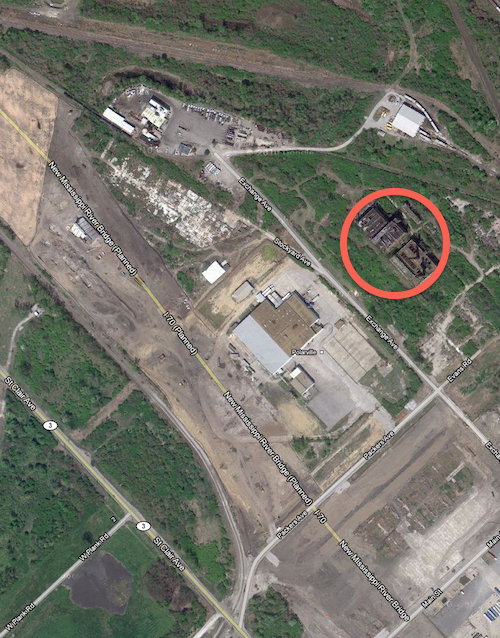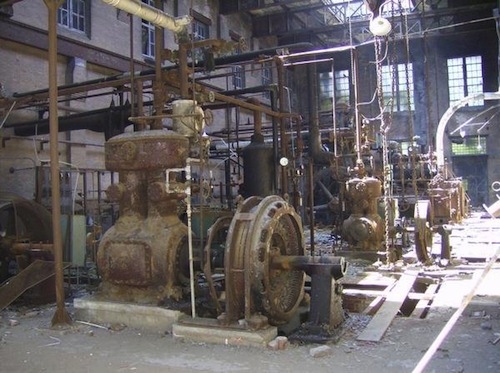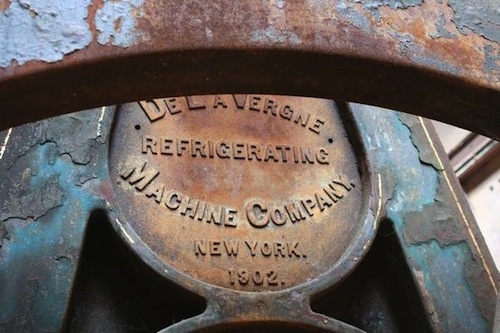THF Big Box vs. Planned Creve Coeur Downtown
This story caught my eye back in July:
THF Realty, a major developer of Walmarts and other big-box stores, is sniffing around the Orchard Lakes subdivision just north of Creve Coeur and near busy Olive Boulevard and Interstate 270.
A company representative met with subdivision trustees on June 3 to discuss a potential buyout of the entire subdivision, according to a subsequent letter from the trustees to subdivision homeowners. (STLToday)
Not surprising since vacant highway-adjacent parcels no longer exist. The subdivision of 256 single family homes is adjacent to I-270, extending more than half the distance from Olive to Page.
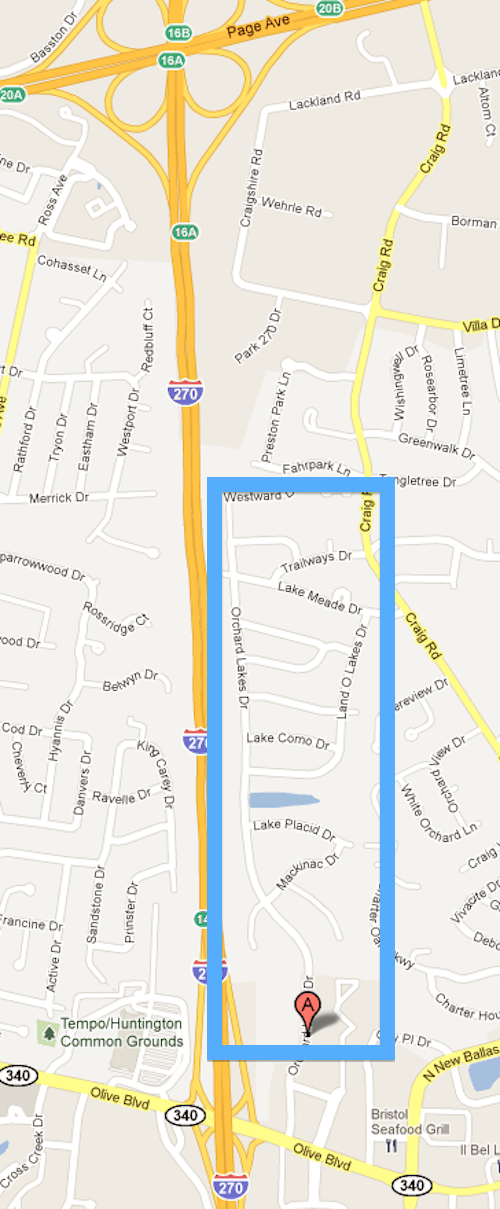
THF Realty wants to make sure all those motorists driving on I-270 can see the generic big box development they are planning.
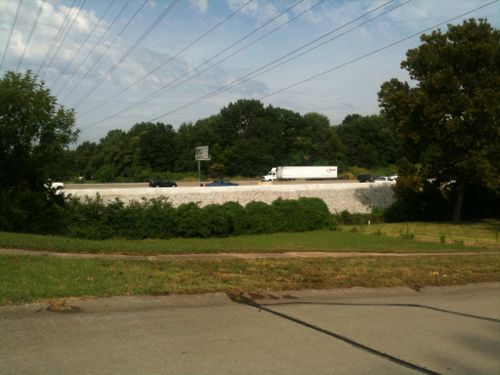
I knew where the subdivision was located but had never driven any of it’s streets, so last month I drove each street in the subdivision.
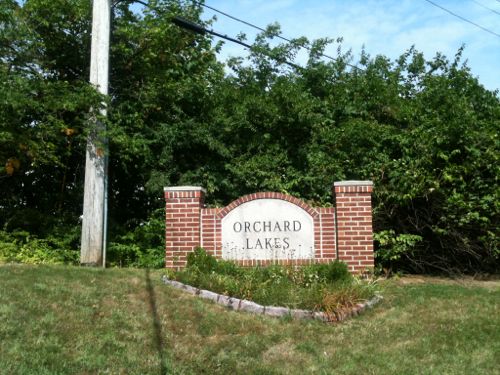
I grew up in a subdivision of similar vintage as Orchard Lakes. From a check of St. Louis County records these houses were built between 1961-66. Â There is nothing particularly unique about the homes or the subdivision itself. With a few exceptions, all the homes looked well maintained. Many have newer windows and roofs.
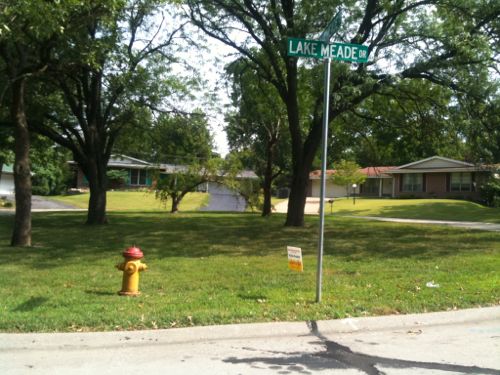
Few sidewalks exist in this subdivision, it’s not at all urban. Not rural either, decidedly suburban. There is no orchard, probably never was.
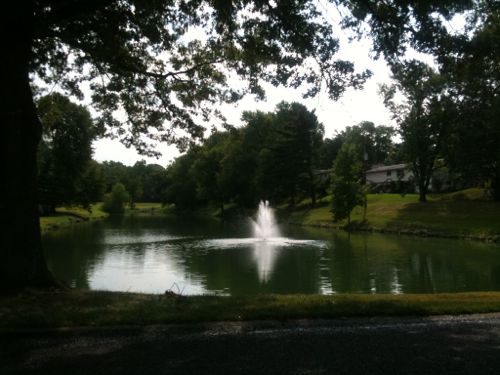
There are lots of very nice mature trees though.
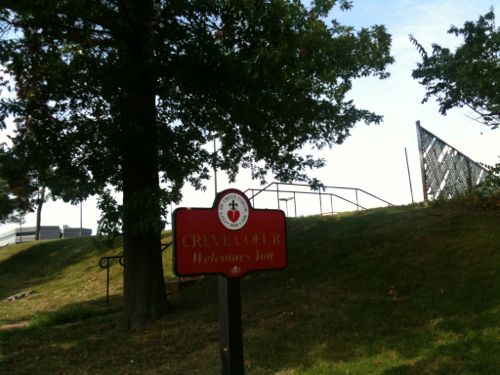
Orchard Lakes is in unincorporated St. Louis County – barely. Creve Coeur has annexed commercial property along Olive Blvd but they didn’t want the adjacent residential areas. For a while now Creve Coeur has been planning to remake Olive & Ballas into their downtown.
In April 2002, the City of Creve Coeur adopted the Comprehensive Plan. Together, with the Pedestrian Plan and Design Guidelines, these plans set a standard for protecting community assets and strength- ening community character. Among the numerous recommendations made in the Comprehensive Plan are several for the Central Business District. Specifically, the Comprehensive Plan recommends the creation of a downtown (or town center) in the vicinity of the Olive-New Ballas intersection. (Plan PDF)
Orchard Lakes is just north of their proposed downtown/central business district:
The strong real estate market in Creve Coeur is anticipated to continue to be a basis for strengthening residential areas while at the same time stimulating major reinvestment in aging or underutilized commercial areas.
Clearly Creve Coeur’s planners didn’t envision the surrounding residential getting replaced by high traffic big box. To a degree this is what Creve Coeur gets for incorporating only the commercial areas along Olive, but not the adjacent residential to the north. Will be interesting to see if either gets built.
– Steve Patterson

